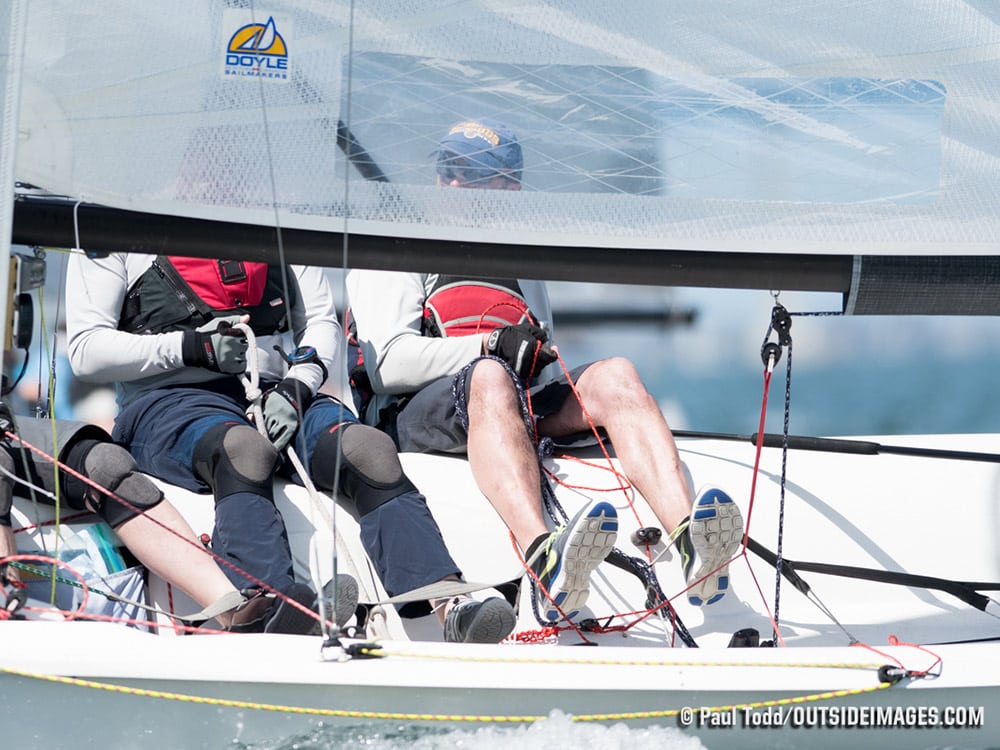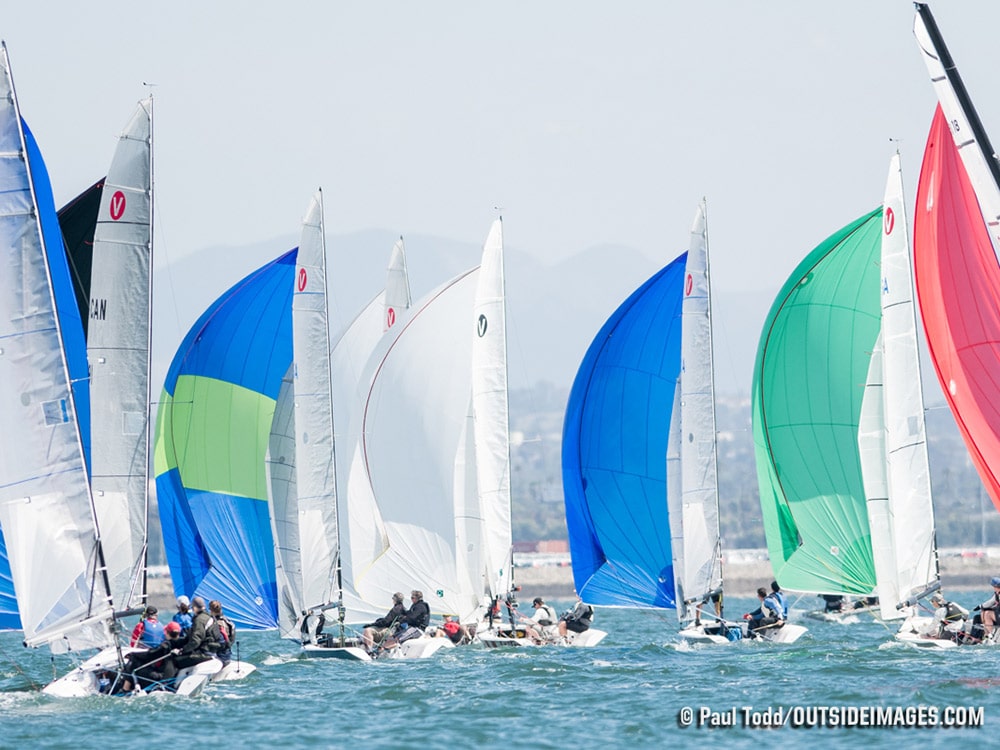Sailing World‘s Boat of the Year judges nailed it back in 1997 when they pegged Brian Bennett’s Viper 640 as the Boat of the Year. At a time when symmetric was about to become old school, the judges knew the 21-foot sportboat would be around for a good long while. It was solid in every measurement: “Fun and challenging to sail, a good value and appealing to a wide range of sailors,” wrote Betsy Alison at the time.
She was right.
As a testament to this enduring one-design, fleets prosper in pockets around the country. Used boats trade hands easily while new boats arrive regularly from Rondar, the Viper’s top-notch British builder. While the East Coast is where Viper 640 sailing got its start (and nearly died when the original builder walked away, to be rescued by Rondar) fleets are now anchored in the Southeast, the Mid-Atlantic, and the West Coast, with groups thriving in the Pacific Northwest and California.

Southern California, especially with its sun, surf and year round sailing, is a natural environment for the Vipers to play. It’s why Viper sailors like George Gluecksmann, Steve Orsini, and Garrett Johns have hauled their craft from the northern left-coast hinterlands of the United States of America. Gluecksmann recently bought the boat in Canada, from an owner who himself scored the boat in a customs-seized property auction. The boat is in excellent form, yet to be rigged properly, and the Helly Hansen NOOD Regatta in San Diego is Gluecksmann’s first regatta with it.
He recruited Viper buddies Orsini and Johns who once served as the class secretary. He knows as many as most about the boat’s place in the sport. The class is pushing upwards of 300 boats, with Rondar “really cranking them out,” says Johns. “The beauty is they are simple to sail and the class rules are strict, which keeps it affordable for guys like us to be competitive.”
It’s “super cool,” he adds, because the top guys are forthright with intel. “The top guys will come to you after a day on the water and give you tips to get you up to speed. It’s not a paid-to-sail kind of class.”
Used, competitive, boats can be had for $15,000. New will run you 35K, with sails, trailer, and everything you need from the box. Logical improvements to the boat since Bennett’s original setup greatly improved the performance and handling of the early-generation boats. The two biggies, says Johns, were a change to a carbon rig, adding more weight to the bulb to make the boat self-righting, and more recently, changing the rudder sweep. It’s now more vertical, for better bite. It is a Viper, after all. It should bite.
When Johns and Orsini first sailed their own Viper back in Washington eight years ago, they were coming out of the ol’ Santana 20 class. Making the switch from pole-back to pole-out sailing had it challenges, but Johns says the transition was just fine.
“We thought it was going to be a wet boat, but it turns out it’s not the case. It’s pretty beamy so when sailing to weather you’re heeled out of the weather enough, and downwind you’re just screaming over the top of everything. That said, it was a huge learning curve for us with the angles; the downwind angles comes so fast.”

Gluecksmann, Orsini and Johns are each of the opinion the boat is simple to sail, and with a bit of effort, anyone can eventually be competitive. “There’s not much in terms of operating the boat,” says Johns. “It’s about little bits of speed. It’s easy to jibe and crashes softly, when it does crash. One thing we’ve learned about it is that the more it’s blowing, and the faster you’re going, the more stable it gets.”
Once you’ve got the rig dialed in, he adds, good races are simply a matter of boathandling and racecourse management. The performance subtleties are the same as for other sportboats, says Johns: Flat is fast going to weather. One trend, he notes, when racing in windier venues, sailing four-up is fast. During a regatta in The Gorge in 2007, “it was super windy and the guys that had four…it was tough to keep up with them upwind.”
As much as he hated losing to the four-man squads, it didn’t taint his own experience of tearing down the Columbia River with the boat creaming along in its ultimate planing glory.
“Talk about a ride,” he says with a longing grin. “Going downhill in gusts of 40 knots, I will always remember that for sure.”









